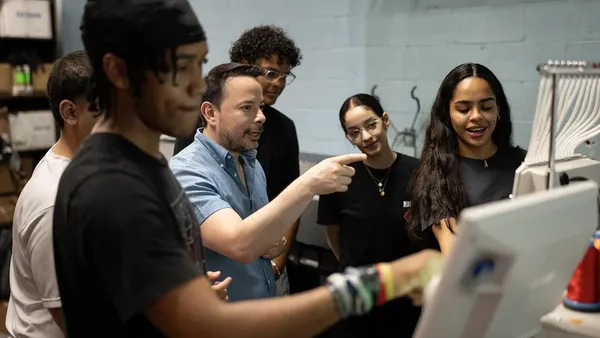Dive Brief:
- Teacher Beth Pandolpho writes for Edutopia that she wants her students to value the class book clubs she runs every school year, so she puts a few steps in motion each fall to help their success.
- To start, she asks her class to identify “quotations that transcend context and exemplify how fiction can reveal truth,” she wrote, adding that she also selects books that either have a unique view of the world or are written by popular authors she thinks will resonate with her classroom.
- On book club meeting days, students complete targeted writing assignments as they talk about the book with each other.
Dive Insight:
Reading may seem like an individual activity, but in classrooms, pairing students together can bring measurable results in academic skills such as reading comprehension, along with softer skills such as social and emotional growth.
Creating class reading clubs require some work up front, but having students lead their own conversations can increase comprehension. Kelly Jo Bridge, in her doctoral dissertation for Hamline University’s School of Education, noted that teachers who created “talk prompts,” or questions that help students focus on what they’re reading, helped boost understanding. For 2nd-grade students, “the use of talk prompts in book clubs increased the proficiency in reading comprehension as well as the level of accountable talk within the group,” she wrote.
Curriculum designers don’t need to keep book clubs and peer instruction penned in individual classrooms either. Peer-to-peer reading instruction can positively impact a child’s social and emotional learning, which can be as crucial to their development as academic growth.
Behavioral specialist Ryan Wheeler notes that students gain social and emotional skills while working with younger students. “When students are given the freedom to be better, to work for something bigger than themselves, and to mentor others, they can thrive,” he wrote for Edutopia.
While there’s nothing more wonderful than watching a child curl up in a corner, wrapped with a book of their own choosing. Getting students to a place where they feel comfortable with reading may require a little support from their teachers, and a little help from their peers, too.










